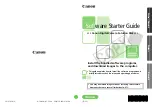
13
channels, and multitone files (such as files in Duotone mode), but not Photoshop files saved
in Multichannel mode.
•
Preflight the document making sure that all fonts and high-resolution links are available.
Without these items, transparency can’t be calculated to imagesetter resolutions. You can
verify each image’s resolution using the Links and Images panel in the Preflight dialog box
or in the preflight report. If an OPI workflow is being used, check the list of conditions under
“Flattening OPI workflows” on page 55.
•
Make sure that all high-resolution links and fonts in imported EPS files are embedded in
those files. For example, if an InDesign document includes an Illustrator file that contains
a TIFF image, that TIFF image should be embedded in the Illustrator file. (Of course, the
Illustrator file should normally be linked to the InDesign document.)
•
For placed PDF and EPS files, make sure all necessary fonts are embedded or available. You
can use the Preflight command to verify this.
•
Expect to closely examine InDesign pages containing transparency. While color proofs are
a proven way to do this, you can also use the new Flattener Preview palette to anticipate the
effects of transparency flattener settings. The Pages palette displays a checkerboard pattern
to identify pages that contain objects with transparency applied.
Preparing book files
For complete information on book files, see “Working with a book file“ on page 30.
Customers should be responsible for making sure book files are completely up to date before
submitting them, by doing the following:
•
Notify the service provider that a book file controls the publication.
•
Synchronize the book. Once the book is synchronized by the customer, it should not be
reordered or synchronized by the prepress service provider.
•
Verify pagination.
•
If a table of contents and index have been generated, make sure they’re current.
•
Preflight the book.
•
Package the book—an especially good idea given the possible number of files and fonts
involved.
















































